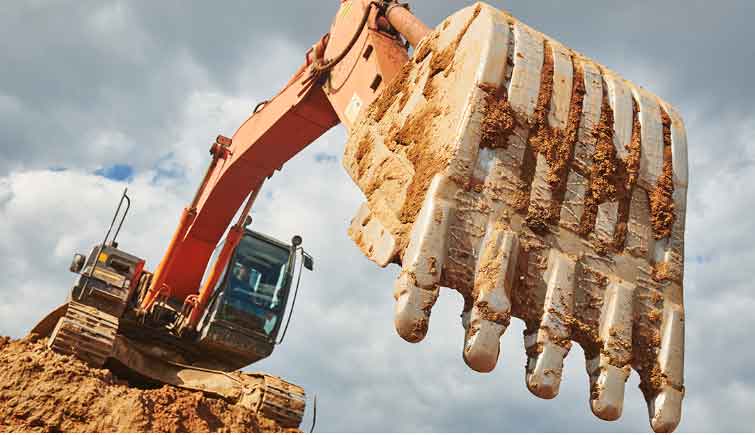Manufacturing high-integrity excavator casting parts requires meticulous control of every production phase. When producing drive wheels—critical components in excavator track systems—we identified sand inclusion defects at tooth profiles as a primary failure mode during initial trials. This defect originated from shell mold degradation during dewaxing and handling, where dislodged sand particles migrated into tooth cavities. The structural complexity of these excavator casting parts, featuring 23 radial teeth integrated with large planar surfaces, amplified this challenge. Our solution centered on optimizing orientation, gating design, shell construction, and thermal management.

Optimal Pouring Orientation and Gating Architecture
Teeth-down top pouring delivered superior results for these excavator casting parts by leveraging gravitational and metallostatic pressure advantages:
$$ P_{effective} = \rho g h + \frac{1}{2} \rho v^2 $$
Where \( \rho \) = metal density, \( h \) = sprue height, and \( v \) = initial pour velocity. This pressure minimized surface defects in tooth roots while simplifying wax assembly welding. Our open gating system prioritized rapid initial filling (<3 seconds for tooth coverage) using the ratios:
| Component | Cross-Section Ratio | Function |
|---|---|---|
| Sprue | 1.0 (Ø50 mm) | Flow distribution |
| Runner | 1.8–2.2 | Velocity reduction |
| Hemispherical Slag Trap | Ø150 mm | Sand collection |
| Riser (direct-attached) | Ø150×250 mm | Shrinkage compensation |
Direct riser attachment eliminated weak ingate sections while increased height enhanced feeding efficiency. The hemispherical slag trap captured >92% of loose sand during handling per mass-balance analysis:
$$ m_{trapped} = m_{total\ sand} – e^{-k t} m_{initial} $$
Where \( k \) = vibration constant and \( t \) = handling time.
Dimensional Control via Adaptive Shrinkage
Wax-silica-carbon steel interaction demanded differential shrinkage allowances for this excavator casting part:
| Feature Size | Shrinkage Allowance | Governing Factors |
|---|---|---|
| Tooth pitch (150–300 mm) | 2.05–2.20% | Radial constraint |
| Hub thickness (>50 mm) | 1.95–2.10% | Thermal mass |
| Tooth height (<80 mm) | 1.80–1.95% | Shell restraint |
| Bolt holes (<25 mm) | 0% | Post-cast machining |
Total linear contraction \( \epsilon_{total} \) combined wax, shell, and metal contributions:
$$ \epsilon_{total} = \alpha_w \Delta T_w + \beta_s \Delta T_s – \alpha_m \Delta T_m $$
Where \( \alpha \) = expansion coefficients, \( \beta_s \) = silica sintering expansion (~0.6%), and \( \Delta T \) = temperature intervals.
Shell Reinforcement Strategy
Shell integrity for these heavy excavator casting parts required enhanced hardening protocols:
- Pre-hardening drying: 45-minute ambient drying before NH₄Cl immersion enabled uniform silica gel formation via:
$$ \text{Na}_2\text{O} \cdot n\text{SiO}_2 + 2\text{NH}_4\text{Cl} \rightarrow 2\text{NaCl} + 2\text{NH}_3 + n\text{SiO}_2 \cdot \text{H}_2\text{O} $$ - Wire mesh integration: Post-fifth coat, Ø2-mm galvanized steel wire was woven over critical surfaces, increasing fracture resistance by 3.2× per stress-distribution modeling:
$$ \sigma_{shell+mesh} = \sigma_{shell} \left(1 + 4.7 \left(\frac{t_w}{t_s}\right)^{0.6}\right) $$
Where \( t_w \) = wire diameter, \( t_s \) = shell thickness.
Thermal Management During Pouring
Temperature gradients significantly impacted these thick-section excavator casting parts. We maintained:
- Shell preheat: 350–400°C via sand insulation
- Pouring sequence: 0–15 s (high flow: 8 kg/s), 15–30 s (medium: 4 kg/s), 30+ s (low: 1.5 kg/s)
- Riser maintenance: Manual crust piercing every 90 seconds
The solidification time \( t_f \) for teeth approximated:
$$ t_f = \left(\frac{V}{A}\right)^2 \frac{\rho_m}{k_m^2} \left( \frac{T_p – T_m}{\Delta T_{supercool}} \right)^2 $$
Where \( V/A \) = modulus, \( k_m \) = metal thermal diffusivity.
Quality Validation Metrics
Process optimization for 342 excavator casting parts demonstrated:
| Parameter | Baseline | Optimized | Improvement |
|---|---|---|---|
| Sand inclusion rate | 17.2% | 0.3% | 98.3% reduction |
| Surface roughness (Ra, μm) | 25–35 | 6.5–8.2 | 72% reduction |
| Dimensional accuracy (IT grade) | IT15–IT16 | IT12–IT13 | +3 grades |
| Process yield | 54% | 67% | 24% increase |
| Post-quench hardness (HRC) | 41–45 | 48–50 | Meeting spec |
This methodology establishes a replicable framework for large, complex excavator casting parts requiring stringent surface and dimensional controls.
